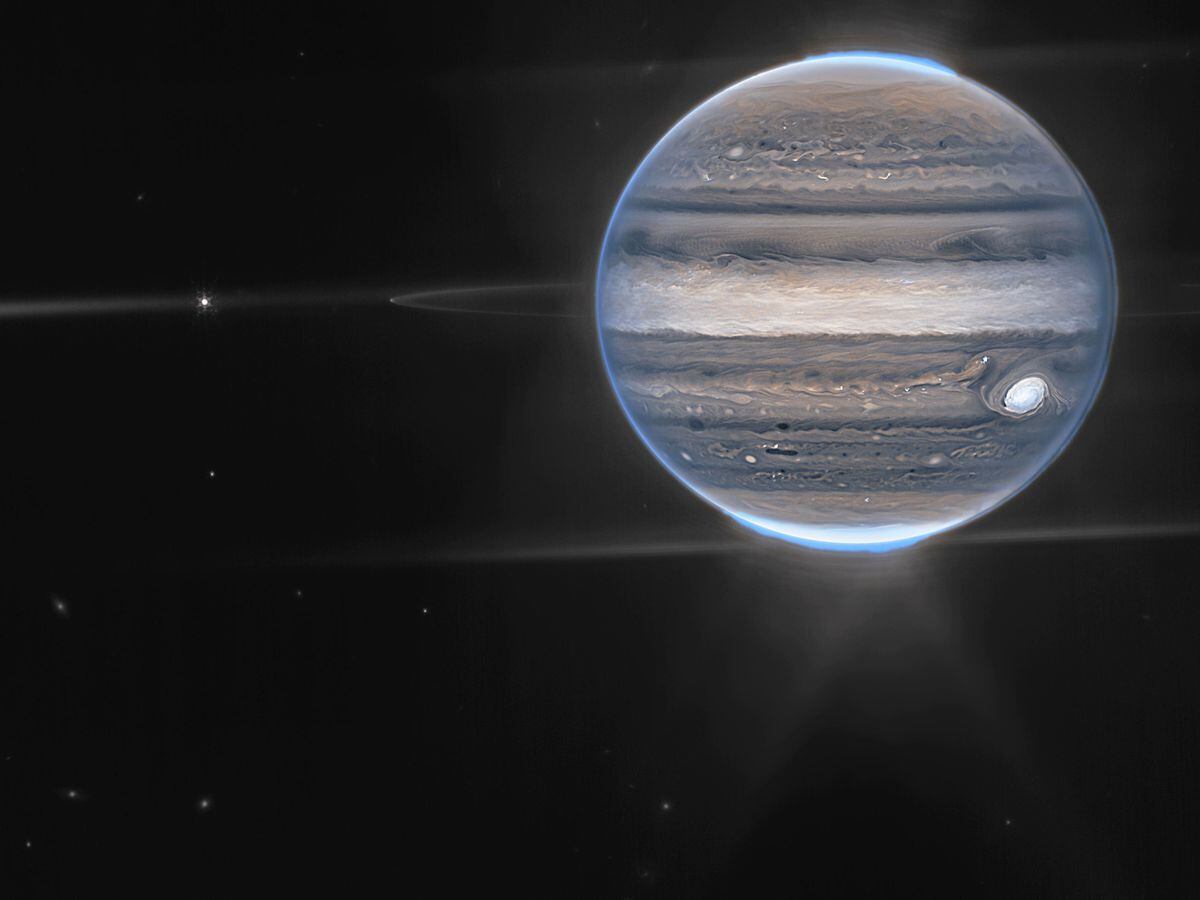[ad_1]

The world’s newest and largest space telescope shows Jupiter like never before – auroras and more.
On Monday, scientists released photos of the solar system’s largest planet.
The James Webb Space Telescope took these images in July, capturing unprecedented views of Jupiter’s northern and southern lights and swirling polar haze.
Jupiter’s Great Red Spot is a storm large enough to devour the Earth, dazzling alongside countless smaller storms.
A wide-angle photo is particularly striking, showing the faint halo around the planet, as well as two small moons against a backdrop of shimmering galaxies.
“We’ve never seen a Jupiter like this. It’s all incredible,” planetary astronomer Imke de Pater of the University of California, Berkeley, said in a statement.
He helped lead the observation.
“To be honest, we really didn’t expect it to be this good.”
According to the US-French research team, the infrared images were artificially coloured blue, white, green, yellow and orange to make these features stand out.
NASA and the European Space Agency’s £8.5 billion successor to the Hubble Space Telescope, which soared late last year, has been observing the universe in infrared light since the summer.
Scientists hope to witness the dawn of the universe with Webb, all the way to the time when the first stars and galaxies formed 13.7 billion years ago.
The observatory is located a million miles from Earth.
[ad_2]
Source link